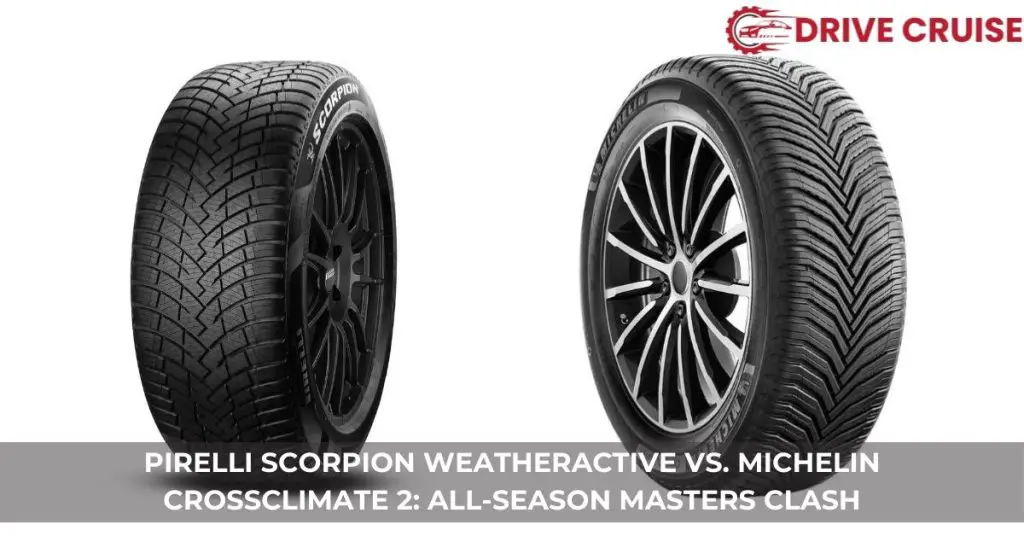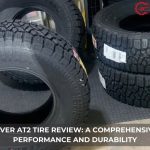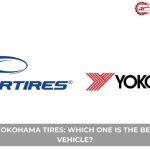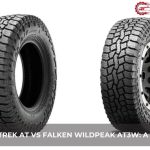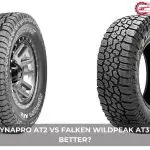In the quest for the ultimate all-season tire, two giants stand out: Pirelli’s Scorpion WeatherActive and Michelin’s CrossClimate 2. Both promise unparalleled performance, blending the lines between seasonal tire capabilities. It’s a showdown that’s caught the attention of drivers worldwide, eager to see which brand can deliver the best mix of durability, comfort, and safety.
We’re diving into the heart of this comparison, exploring what sets these tires apart. It’s not just about the tread patterns or the rubber compounds; it’s about how these tires perform in the real world, from rain-soaked streets to snow-covered roads. Each has its own set of features and benefits, tailored to meet the demands of discerning drivers. So, let’s get started on this journey to find out which tire truly stands above the rest.
Pirelli Scorpion WeatherActive Overview
Moving on to examine the Pirelli Scorpion WeatherActive, we find a tire designed with versatility in mind. Pirelli, a brand synonymous with high-performance and durability, brings to the table a tire that aims to meet the needs of drivers across all seasons. The Scorpion WeatherActive stands out for its innovative tread pattern and compound, specifically engineered to adapt to a wide range of weather conditions.
First and foremost, Pirelli has equipped the Scorpion WeatherActive with a unique tread design. This design enhances grip on wet roads, reducing hydroplaning risks and improving braking performance. It’s not just about wet conditions, though. The tread pattern also plays a significant role in snow, where the tire demonstrates commendable traction. Such qualities make the Scorpion WeatherActive a reliable option for drivers who experience moderate winter conditions but don’t want to switch to dedicated winter tires.
Another notable feature is the tire’s long-lasting tread life. Pirelli uses a specialized rubber compound that not only enhances durability but also contributes to a smoother ride. This combination ensures that drivers can enjoy the benefits of the tire over many miles, making it a cost-effective choice in the long run.
Noise reduction is also a focus for the Scorpion WeatherActive. Pirelli integrates specific technology within the tread pattern to minimize road noise, ensuring a quieter, more comfortable ride for passengers. This attention to comfort complements the tire’s all-season capabilities, ensuring that driving pleasure isn’t sacrificed for performance.
In terms of fuel efficiency, the Scorpion WeatherActive’s construction aims to reduce rolling resistance. This feature translates to lower fuel consumption, underscoring the tire’s appeal to environmentally conscious drivers looking for an eco-friendly option.
The Pirelli Scorpion WeatherActive offers a well-rounded package of performance, durability, and comfort. Its ability to tackle diverse weather conditions, combined with features that enhance the driving experience, positions it as a strong contender in the all-season tire segment.
Michelin CrossClimate 2 Overview
Transitioning from the well-rounded performance of the Pirelli Scorpion WeatherActive, let’s dive into the specifics of the Michelin CrossClimate 2. Renowned for its exceptional adaptability, the CrossClimate 2 stands out in the all-season tire category with innovative features tailored for versatility across varying weather conditions.
At the heart of the CrossClimate 2’s design is Michelin’s groundbreaking V-Formation tread pattern. This unique feature enhances grip on both dry and wet roads, offering drivers confidence in unpredictable weather. Equally impressive is the tire’s ability to maintain traction in snowy conditions, an attribute that secures its position as a true all-season tire.
Michelin incorporates PIANO Noise Reduction Technology, which significantly lowers road noise, providing a quiet, comfortable ride. This technology demonstrates Michelin’s commitment to not only performance but also to the driving experience.
Fuel efficiency is another cornerstone of the CrossClimate 2’s design. Through optimization of the tire’s contact with the road, it reduces rolling resistance, thus lowering fuel consumption and contributing to a greener driving experience.
Durability also sets the CrossClimate 2 apart. Michelin guarantees long tread life, offering drivers peace of mind through extended usage periods without compromising on safety or performance.
The Michelin CrossClimate 2 excels in adaptability, embracing state-of-the-art technology to improve grip, reduce noise, and increase efficiency. Its innovative tread design, long-lasting durability, and commitment to a quieter, more fuel-efficient ride make it a formidable competitor in the all-season tire sector.
Head-to-Head Comparison
Transitioning from the unique features of both the Pirelli Scorpion WeatherActive and the Michelin CrossClimate 2, we dive into a head-to-head comparison to help you discern which tire might best suit your needs. This comparison draws on several crucial aspects.
Performance in Various Conditions
The Scorpion WeatherActive boasts an all-season design aiming for stellar performance across various weather conditions. It excels particularly in wet and moderately snowy conditions, thanks to its tailored tread pattern and rubber composition. On the other hand, the CrossClimate 2, with its V-Formation tread pattern and compound, not only matches but in some cases surpasses the Scorpion WeatherActive in terms of dry, wet, and snow traction. This gives the CrossClimate 2 a slight edge in versatility and safety.
Noise and Comfort
Michelin’s CrossClimate 2 incorporates the PIANO Noise Reduction Technology, which significantly reduces road noise, offering a noticeably quieter ride compared to many competitors, including the Scorpion WeatherActive. When it comes to comfort, both tires deliver a smooth ride, but the CrossClimate 2 takes the lead in reducing vibrations and noise on varied road surfaces.
Durability and Tread Life
Both brands are renowned for their durable constructions and long-lasting tread life. However, Michelin often emphasizes the longevity of their CrossClimate 2 tires, backed by a robust warranty. Customers have reported impressive mileage without significant performance degradation, particularly in comparison to the Scorpion WeatherActive, which also offers a commendable tread life but with fewer guarantees of exceeding standard mileage expectations.
Fuel Efficiency
Though both tires are designed to minimize rolling resistance, the CrossClimate 2 edges out slightly with its efficiency-enhancing design elements. This could translate into better fuel economy over the tire’s lifespan, making it a more cost-effective choice in the long run, particularly for drivers conscious of fuel consumption and environmental impact.
While the Pirelli Scorpion WeatherActive offers solid performance in varied weather conditions, the Michelin CrossClimate 2 stands out for its superior grip across all terrains, reduced noise levels, and a blend of durability with fuel economy, making it a compelling choice for those prioritizing safety, comfort, and efficiency.
Pros and Cons
After diving into the detailed comparison between Pirelli’s Scorpion WeatherActive and Michelin’s CrossClimate 2, we’ve identified several pros and cons for each tire, aiding in decision-making for potential buyers.
Pirelli Scorpion WeatherActive
Pros:
- Versatility: This tire excels in various seasonal conditions, offering reliable performance whether it’s sunny, rainy, or lightly snowy.
- Performance: Drivers can expect a solid traction and handling experience, thanks to its adaptive design.
Cons:
- Wet and Snow Performance: When compared directly with the Michelin CrossClimate 2, it falls slightly short in providing the same level of grip and control in wet and snowy conditions.
- Noise Level: Some users might find the tire a bit noisier, especially when transitioning from dry to wet roads.
Michelin CrossClimate 2
Pros:
- Superior Wet, Dry, and Snow Performance: It’s hard to beat the CrossClimate 2’s exceptional performance across all weather conditions, thanks to its innovative tread pattern and compound.
- Noise Reduction: Michelin’s Noise Reduction Technology ensures a quieter ride, enhancing passenger comfort regardless of the road surface.
- Durability and Fuel Efficiency: Not only does it last longer due to its durable construction, but it also helps in saving fuel, making it a cost-effective choice in the long run.
- Pricing: The superior features and benefits of the Michelin CrossClimate 2 come with a higher price tag, which might not fit everyone’s budget.
- Less Aggressive Off-Road Capabilities: For those who frequently venture off the beaten path, the CrossClimate 2 might not offer as much ruggedness as the Pirelli Scorpion WeatherActive.
In weighing these pros and cons, drivers can better understand which tire aligns with their driving conditions and preferences. Whether it’s the adaptability and performance of the Pirelli Scorpion WeatherActive or the unmatched all-weather capabilities and longevity of the Michelin CrossClimate 2, the choice becomes clearer, ensuring safety, comfort, and efficiency on the road.
User Reviews and Feedback
In this section, we delve into what drivers are saying about their experiences with Pirelli’s Scorpion WeatherActive and Michelin’s CrossClimate 2 tires. Gathering insights from various platforms, including automotive forums, product review sites, and online retail feedback, we’ve identified some common themes in user reviews that might help guide your decision.
Pirelli Scorpion WeatherActive
Drivers consistently praise the Scorpion WeatherActive for its superior handling and stability, especially on dry roads. Many appreciate the comfort level these tires afford, citing a smooth ride even on rough pavements. However, a few users have reported dissatisfaction with the tire’s performance in heavy rain and deep snow, noting a decrease in traction under these conditions. Additionally, there’s a consensus that although these tires are generally quiet, there can be noticeable road noise at higher speeds.
Michelin CrossClimate 2
Conversely, the Michelin CrossClimate 2 receives accolades for its impressive wet and snowy road performance. Users highlight the confidence these tires provide in adverse weather conditions, along with their remarkable durability. Noise reduction technology is another frequently mentioned benefit, with drivers experiencing a quieter ride relative to other all-weather tires. On the flip side, the higher cost of the CrossClimate 2 compared to competitors, including the Scorpion WeatherActive, is a point of contention for some shoppers. Despite this, the consensus suggests the price is justified by the tire’s long-term value and performance.
Reviews for both the Scorpion WeatherActive and CrossClimate 2 underline the importance of considering your typical driving conditions and priorities. If you’re inclined towards driving in varied conditions but prefer a more budget-friendly option with good dry performance, the Scorpion WeatherActive may suit you best. Alternatively, if you’re willing to invest in top-notch all-weather performance and a quieter, more durable tire, the Michelin CrossClimate 2 seems to be the favored choice among drivers.
Conclusion
Choosing between Pirelli’s Scorpion WeatherActive and Michelin’s CrossClimate 2 comes down to what matters most to us as drivers. If you’re after a tire that can tackle various conditions with ease and prioritize handling and comfort, the Scorpion WeatherActive might be your go-to. However, if you’re willing to invest a bit more for superior performance in wet, snowy conditions, and value durability and noise reduction, the Michelin CrossClimate 2 could be the better choice. Both tires have their unique strengths, so it’s all about matching them with our specific needs to ensure we’re getting the best possible ride. Remember, whether it’s a daily commute or an adventurous road trip, the right tire can make all the difference.

